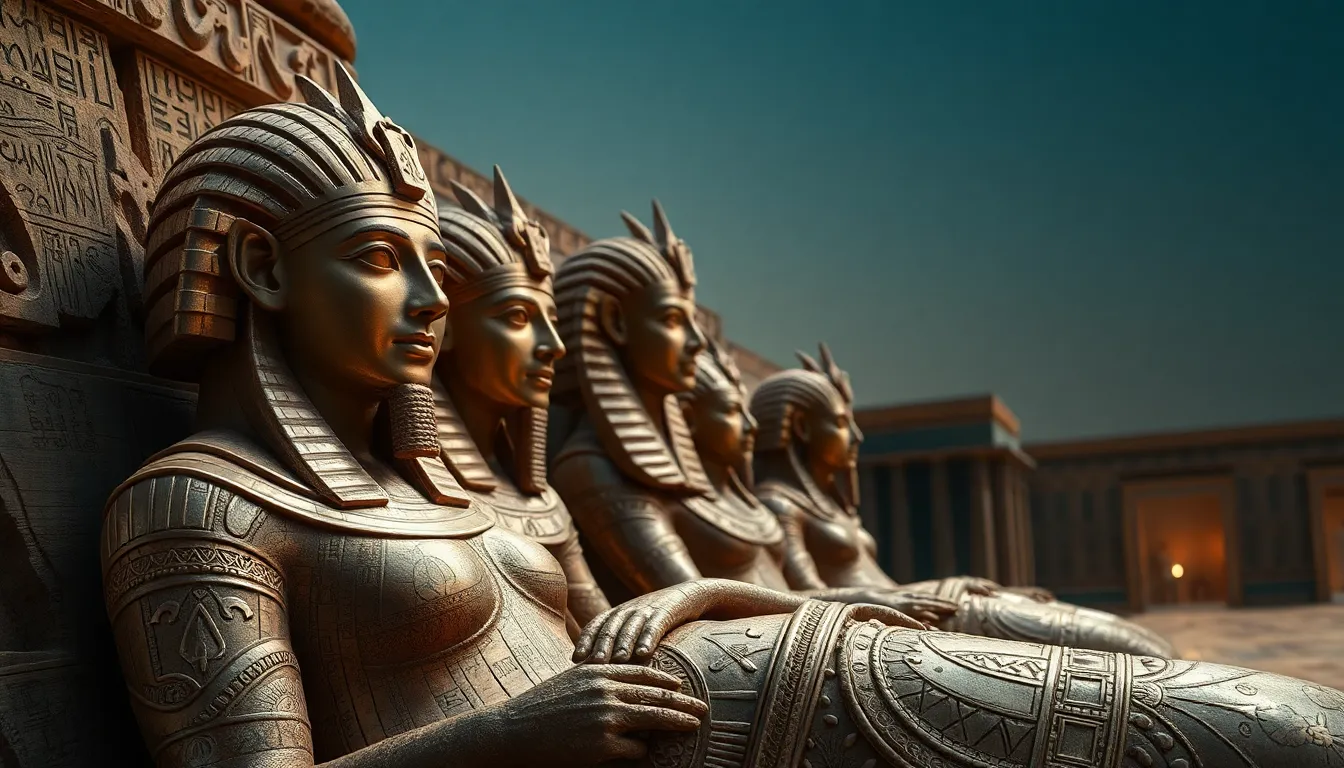The Influence of Mythology on Royal Burials
I. Introduction
Royal burials, the final resting places of kings, queens, and other high-ranking individuals, hold immense cultural and historical significance. These elaborate funerary practices often reflect the beliefs, values, and traditions of the societies from which they originate.
Mythology, the collection of traditional stories that explain the beliefs and practices of a culture, plays a vital role in shaping burial traditions across various civilizations. From the divine significance of gods to the rich narratives surrounding the afterlife, mythology profoundly influences how societies honor their deceased leaders.
The purpose of this article is to explore the intricate connections between mythology and royal burial practices, examining how these beliefs shape the rituals, symbolism, and architectural designs of royal burials throughout history.
II. Historical Context of Royal Burials
Throughout history, different civilizations have developed unique royal burial traditions that often reflect their mythological beliefs.
- Egyptians: The practice of mummification and the construction of grand tombs like the Pyramids of Giza.
- Greeks: The construction of elaborate tombs and the inclusion of funerary rites honoring gods.
- Norse: Ship burials that symbolize a journey to the afterlife.
Mythology has played a critical role in shaping these traditions. For instance, the Egyptian belief in the afterlife led to intricate burial practices designed to ensure a safe passage for the deceased into the realm of the gods. Notable royal burials throughout history, such as those of Tutankhamun and Agamemnon, showcase the elaborate rituals and rich symbolism associated with these practices.
III. Mythological Beliefs and the Afterlife
Different mythological perspectives on the afterlife significantly influenced burial rituals and practices across cultures.
- Egyptian Mythology: Believed in a dual life after death, with judgment by Osiris determining one’s fate.
- Greek Mythology: The concept of the underworld ruled by Hades, where the souls of the deceased resided.
- Norse Mythology: The belief in Valhalla, where warriors would feast and train for Ragnarok.
The Egyptian custom of placing items in tombs, such as food, jewelry, and sacred texts, was influenced by the belief that these possessions would accompany the deceased in the afterlife. Similarly, Greek funerary practices included offerings to ensure safe passage to the underworld.
Case studies of these mythologies reveal the deep connections between beliefs, rituals, and the practices surrounding death and burial.
IV. Symbolism in Royal Burials
Royal burials are rich in symbolism, with various elements in burial sites and artifacts reflecting the deceased’s status and beliefs.
- Artifacts: Items buried with the deceased often symbolize their status, power, and beliefs.
- Gods and Mythological Figures: Representations of gods such as Anubis in Egyptian tombs serve to guide and protect the deceased.
For example, the use of gold in royal burials not only signifies wealth but also conveys a connection to the divine. The presence of specific symbols, such as the ankh, serves as a reflection of the deceased’s beliefs in life after death.
V. Architectural Influences and Burial Sites
Architectural designs of burial sites are often inspired by mythology, with structures reflecting the beliefs and stories of a culture.
- Pyramids of Giza: These monumental structures symbolize the divine connection between the pharaoh and the gods.
- Tomb of Agamemnon: An impressive beehive-shaped tomb reflecting the grandeur associated with Greek royalty.
- Viking Ship Burials: Ships symbolize the journey to the afterlife, showcasing the belief in an adventurous afterlife.
These notable examples illustrate how burial architecture serves not only as a resting place but also as a manifestation of cultural beliefs and mythological themes.
VI. Rituals and Ceremonies: Mythology in Action
The rituals conducted during royal burials are deeply rooted in mythological narratives, often involving elaborate ceremonies that honor the deceased.
- Egyptian Rituals: The “Weighing of the Heart” ceremony, where the deceased’s heart is weighed against the feather of Ma’at.
- Greek Funerary Rites: Offering sacrifices to the gods to ensure safe passage for the soul.
- Norse Burial Customs: The placement of the deceased in a ship, accompanied by goods for the journey to the afterlife.
Mythological narratives play a crucial role in these rituals, guiding the participants on how to honor their loved ones while adhering to cultural beliefs.
Additionally, the influence of mythology extends to the mourning practices of the living, shaping how communities grieve and remember their lost leaders.
VII. The Evolution of Mythology and Burial Practices
As societies evolve, so do their mythological interpretations and burial customs.
- Changing Interpretations: New understandings of myth can lead to adaptations in burial practices.
- Cultural Exchange: Interactions between different cultures often result in the blending of burial traditions.
- Modern Adaptations: Contemporary practices may reinterpret ancient customs to fit modern beliefs.
These shifts highlight the dynamic nature of mythology and its lasting impact on how societies honor their deceased, demonstrating that royal burials are not static but evolve alongside cultural beliefs.
VIII. Conclusion
The relationship between mythology and royal burials is profound and multifaceted. Mythological beliefs shape the rituals, symbolism, and architectural designs of these burial practices, revealing a culture’s values and understanding of life and death.
As we reflect on the continuing relevance of these influences, it becomes clear that understanding mythology is essential for interpreting historical contexts, providing insights into how ancient societies viewed their leaders and the afterlife.
Ultimately, the exploration of mythology in royal burials serves as a testament to the enduring power of these narratives in shaping human experience and cultural identity.




